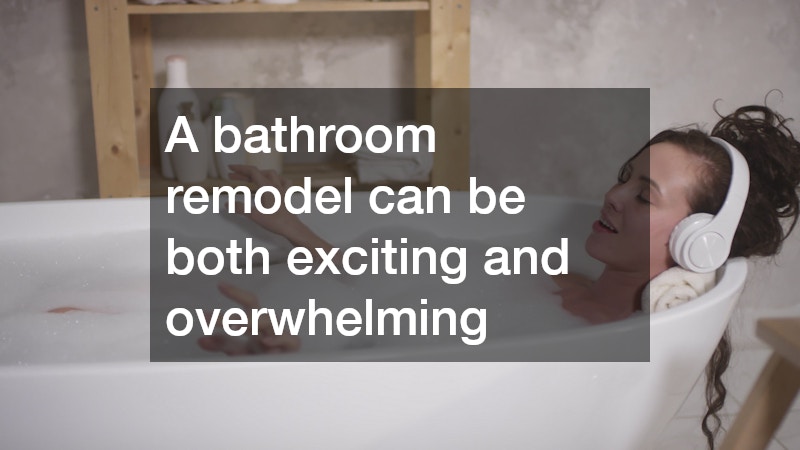Remodeling your bathroom can completely transform one of the most frequently used spaces in your home. Whether you’re aiming for a more modern design, increased functionality, or better use of space, a well-planned renovation can improve your daily routine and boost your home’s overall appeal. However, a successful remodel requires thoughtful planning and attention to detail. Here are seven key things to consider when starting your bathroom remodeling project.
1. Determine Your Needs and Priorities
Before diving into design ideas or layout changes, take a moment to define what you need most from your new bathroom. Do you want more storage? A bigger shower? A double vanity? Clear goals will help guide every decision, from layout to materials.
Prioritize function over trends—what works well for one household may not be practical for yours. List what currently frustrates you about the space and what you hope to improve. These notes will serve as your checklist throughout the project.
2. Evaluate the Layout and Space
Space planning is one of the most critical aspects of a bathroom remodel. If your current layout doesn’t make the best use of space, think about how you can rearrange fixtures for better flow and efficiency. For example, moving the toilet or sink might open up more walking room or storage opportunities. However, keep in mind that major layout changes often involve plumbing adjustments, so it’s important to weigh the benefits of a new arrangement versus keeping things in place.
3. Choose the Right Materials for Moisture-Prone Areas
Bathrooms experience high levels of moisture, so it’s essential to choose materials that are durable, water-resistant, and easy to maintain. From tile and paint to cabinets and fixtures, everything should hold up well in a humid environment. Porcelain or ceramic tiles are a great choice for flooring and walls, while moisture-resistant drywall and high-quality sealants will help prevent issues like mold and warping. When selecting cabinetry or shelving, opt for materials that won’t swell or degrade over time due to steam and splashes.
4. Focus on Lighting and Ventilation
Lighting and ventilation are often overlooked during bathroom remodels, but both play a crucial role in comfort and safety. A layered lighting approach—combining overhead lights, vanity lights, and possibly accent lighting—will ensure you have ample illumination for all tasks. For ventilation, ensure your bathroom has a strong and quiet exhaust fan to reduce humidity and prevent mold buildup. If possible, consider adding or enlarging a window to bring in natural light and fresh air.
5. Don’t Overlook Storage Solutions
Bathroom storage is often limited, but with smart design, you can make the most of every inch. Built-in shelves, medicine cabinets, and vanity drawers help keep your space organized and clutter-free. Consider recessed shelving in the shower, pull-out compartments under the sink, or vertical cabinets that make use of wall space. Tailor your storage to your daily needs—whether it’s extra towels, toiletries, or hair tools—so everything has a designated place.
6. Plan for Accessibility and Long-Term Use
A bathroom remodel is a great opportunity to future-proof your home. Think about who will be using the space and how their needs may change over time. Features like grab bars, walk-in showers with low thresholds, lever-style faucets, and non-slip flooring can make the bathroom safer and more accessible without sacrificing style. Even if you don’t need these features now, planning for the long term can add convenience and peace of mind.
7. Hire a Trusted Bathroom Remodeler
Even the best design plans can fall short without skilled execution. A professional bathroom remodeler can help you navigate design decisions, coordinate trades, and avoid costly mistakes. They bring experience and technical knowledge to ensure plumbing, electrical, and structural work is done correctly and to code. Be sure to check reviews, view past work, and ask for references before making your final choice. Clear communication and a detailed project timeline are also signs of a reliable contractor.
A bathroom remodel can be both exciting and overwhelming, but careful planning makes all the difference. By thinking through your layout, materials, storage, and long-term needs, you’ll be well on your way to creating a space that looks beautiful and functions seamlessly. Don’t rush the process—take the time to do it right and work with professionals who understand your vision. With the right approach, your new bathroom will become one of your favorite rooms in the house.


